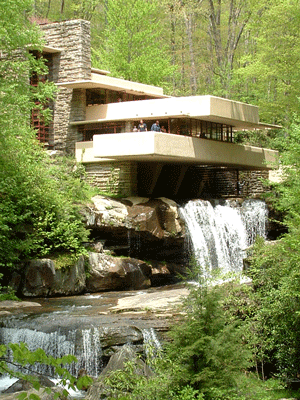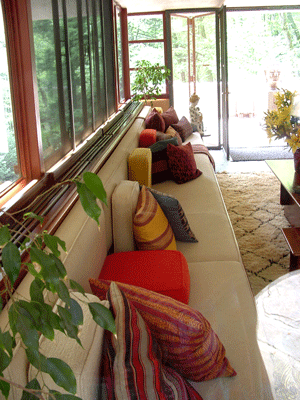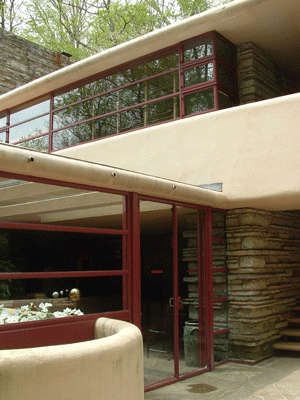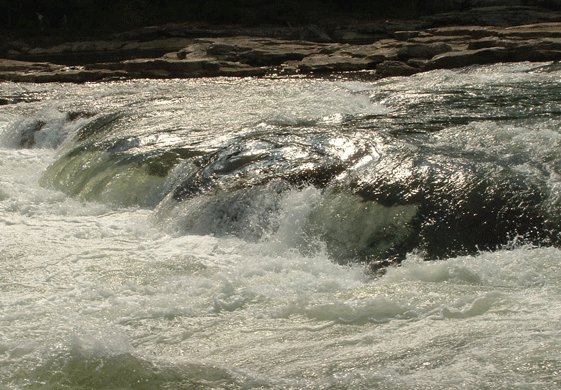Tales of a 21st Century Gypsy
May 8, 2004. By a Waterfall.
Sometimes it seems I just have to write like a tourist. I feel like a 19th century lady on a grand tour, describing her visit to the grand sites of Florence. Well, perhaps not the grand tour, I’m not in Europe after all. Perhaps I could fancy myself a middle-aged lady in 19th century New York, accompanying her brother on a western excursion to see the great natural sights of the Allegheny Mountains.
But my major sight today is distinctly 20th century, Frank Lloyd Wright’s masterpiece Fallingwater, in the mountains south east of Pittsburgh. He built it in 1936, and it was on the cover of Time Magazine in 1938, according to our tour guide. My mother might have actually seen that cover when she was sixteen; for as long as I can remember she spoke in awe of “the house built over a waterfall.”
Maybe you know Frank Lloyd Wright’s style – horizontal low-ceilinged homes of stone and wood, the eye drawn always to the windows and the world outside. Low horizontal couches, wide wood tables and desks, unbroken rows of bookshelves along twenty or thirty foot walls. The low ceilings make the inside spaces a bit claustrophobic to a modern sensibility, only partially alleviated by the way they open to the waterfall directly below.



